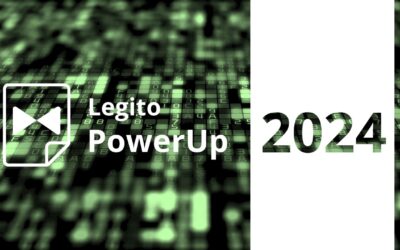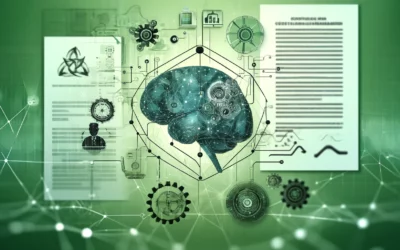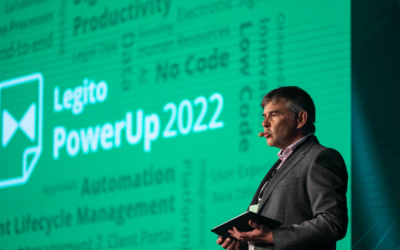Advanced automation features
Advanced automation features

Charles Drayson

Comparing automation solutions is tricky if you don’t know what the more advanced features will do or whether you need them. Is it likely that you would use only the basic features, and anything else means paying for complexity and bloat that you don’t need? The assessment is harder if this is the organisation’s first deployment of an automation solution. A demo is good, but each vendor will run a demo that looks slick.
Comparing automation solutions is tricky if you don’t know what the more advanced features will do or whether you need them. Is it likely that you would use only the basic features, and anything else means paying for complexity and bloat that you don’t need? The assessment is harder if this is the organisation’s first deployment of an automation solution. A demo is good, but each vendor will run a demo that looks slick.
ADVANCED FEATURES – AM I JUST ADDING UNNECESSARY COMPLEXITY AND COST?
ADVANCED FEATURES – AM I JUST ADDING UNNECESSARY COMPLEXITY AND COST?
Successful projects create a demand for more. Most vendors (including Legito) advise starting with a simple project and then building incrementally. Projects which begin with large, ambitious rollouts carry risk. The first project is usually a success, unless an organisation has bought something completely unsuitable. Unfortunately, some organisations find it hard to increase adoption after the first project. What will you find when it’s time to take off the water-wings and swim in the deep end?
If you decided to invest in automation, it’s probable that some of your needs were not simple. Organisations are messy. Departments want different things. For every process, there are exceptions. You might have a standard document broadly suitable for most occasions but ideally suited to almost none. You map out a process, and then someone changes it, or you find that people are not following policies. If you over-simplify the solution, your colleagues will not use it, find ways round it, or complain loudly that it doesn’t work.
Successful projects create a demand for more. Most vendors (including Legito) advise starting with a simple project and then building incrementally. Projects which begin with large, ambitious rollouts carry risk. The first project is usually a success, unless an organisation has bought something completely unsuitable. Unfortunately, some organisations find it hard to increase adoption after the first project. What will you find when it’s time to take off the water-wings and swim in the deep end?
If you decided to invest in automation, it’s probable that some of your needs were not simple. Organisations are messy. Departments want different things. For every process, there are exceptions. You might have a standard document broadly suitable for most occasions but ideally suited to almost none. You map out a process, and then someone changes it, or you find that people are not following policies. If you over-simplify the solution, your colleagues will not use it, find ways round it, or complain loudly that it doesn’t work.
YOU THINK YOU ASKED ALL THE STAKEHOLDERS ABOUT THEIR REQUIREMENTS, AND, AFTER YOU BUY THE SOLUTION, YOU FIND THEY ASK FOR SOMETHING DIFFERENT.
YOU THINK YOU ASKED ALL THE STAKEHOLDERS ABOUT THEIR REQUIREMENTS, AND, AFTER YOU BUY THE SOLUTION, YOU FIND THEY ASK FOR SOMETHING DIFFERENT.
Pareto Principle
This is why, sooner or later, you will want advanced features. The Pareto Principle still works – you will get 80% of the benefit from 20% of the features, but there are three more factors to consider:
- It’s hard to predict which features will form the 20% delivering most of the benefit.
- As you expand across the enterprise, each department might depend on different features.
- People who get good at developing solutions using Legito don’t want to stop at 80% – believe me, it’s addictive, and you will want more.
It’s like buying a car. I still remember cars without electric windows – we thought it was mad that some people would pay extra money to save the effort of winding down a window by hand. Remember manual chokes to get engines started? They were not exactly complex, but none of us looked back after electronic ignition. When cars first had air conditioning, it seemed extravagant. As for heated steering wheels, why would anyone need one? But, the driving experience with all those features is fundamentally different from the experience of the sort of cars I first drove as a teenager. There’s another similarity with buying software solutions: if you buy something basic, it might be impossible to retrofit the features you need – you have to buy again (and write off the investment in the first solution). For the manufacturers, it was hard to upgrade legacy models to compete with new modern designs.
Next-generation automation solutions compared to legacy solutions are, like modern cars, easier to use and more amenable to wide adoption by colleagues who are increasingly intolerant of mediocre technology.
What are the advanced features that make the difference?
Pareto Principle
This is why, sooner or later, you will want advanced features. The Pareto Principle still works – you will get 80% of the benefit from 20% of the features, but there are three more factors to consider:
- It’s hard to predict which features will form the 20% delivering most of the benefit.
- As you expand across the enterprise, each department might depend on different features.
- People who get good at developing solutions using Legito don’t want to stop at 80% – believe me, it’s addictive, and you will want more.
It’s like buying a car. I still remember cars without electric windows – we thought it was mad that some people would pay extra money to save the effort of winding down a window by hand. Remember manual chokes to get engines started? They were not exactly complex, but none of us looked back after electronic ignition. When cars first had air conditioning, it seemed extravagant. As for heated steering wheels, why would anyone need one? But, the driving experience with all those features is fundamentally different from the experience of the sort of cars I first drove as a teenager.
There’s another similarity with buying software solutions: if you buy something basic, it might be impossible to retrofit the features you need – you have to buy again (and write off the investment in the first solution). For the manufacturers, it was hard to upgrade legacy models to compete with new modern designs.
Next-generation automation solutions compared to legacy solutions are, like modern cars, easier to use and more amenable to wide adoption by colleagues who are increasingly intolerant of mediocre technology.
What are the advanced features that make the difference?
#1 No code development
Here’s the problem: not many people fall into that category, and even if they do, not many organisations want to pay their key staff to mess around dabbling in code just because it has some esoteric appeal. They want their lawyers to use their legal drafting skills. They want their HR professionals thinking about people-friendly processes. They want their procurement teams focused on delivering value.
#2 Workflow
#3 Dashboards
#4 Customisation
#5 Digital signatures
#6 Data mining
#7 Who knows what’s coming?
#1 No code development
I liked writing code using the first generation of document automation solutions. It was satisfying to get it right. But, I was one of those who also liked programming as a kid, and I relished the challenge. If you want your subject experts to build a solution for their teams, you could look around for people who also like messing around with code.
Here’s the problem: not many people fall into that category, and even if they do, not many organisations want to pay their key staff to mess around dabbling in code just because it has some esoteric appeal. They want their lawyers to use their legal drafting skills. They want their HR professionals thinking about people-friendly processes. They want their procurement teams focused on delivering value.
#2 Workflow
Many organisations who bought the first-generation solutions were surprised to find that the solutions generated a document and then did nothing else. The data used to create a document was mostly discarded or useless. The documents were no less and no more useful than a simple Word file. Everything else happened by email. Have your colleagues reviewed the document? No idea – email them. How many replies are you waiting for? No idea – trawl your sent items folder and see if you’ve had replies. Maybe create a list in a notepad and tick them off as they arrive. Is your document waiting for approval from someone who is on annual leave? You will need workflow. Do you have the budget and bandwidth to buy a workflow solution and integrate it with the document automation tool? Much better to have them in the same tool.
#3 Dashboards
If you deploy an automated solution, you probably have more than a few work items to get processed. After the solution has been running for a while, you will want to manage the workload. You will want visibility of current work. You will want to retrieve information from work processed months ago.
#4 Customisation
It’s better to have one solution that can be used across the whole enterprise, rather than each department buying its own solution. Each department might not care, but each department might not have the autonomy to fly solo on such things. However, each department will have a different requirement and a different view on your organisation’s world. That’s why you need to be able to customise. Customising a solution is more than just adding a logo and being able to select a colour scheme for the screens. True customisation means recognising that each team uses different data, different reports, and different processes. Moreover, they might want to separate one from another. The HR team does not want employee records accessible across the organisation. On the other hand, HR might want to roll out some processes (annual leave requests, new joiner processes) across all teams. This level of customisation requires software designed to be enterprise-wide.
#5 Digital signatures
Many documents need to be signed: contracts, purchase orders, job offers, approvals, audits. If they need to be signed by more than one person, you might need to specify the order in which they get signed. In many situations, you might need to verify that a signature is genuinely applied by the person named. It might not be good enough to copy and paste a GIF image taken from your scanned hand-written signature. Signing documents the old-fashioned way is a nuisance, time consuming and increasingly it makes you look old-fashioned. Since Covid, digital signatures have dramatically increased. In my work as a lawyer, I rarely see documents signed using hand-written ‘counterparts’ scanned and emailed. If a document is to be digitally signed, generate the document in a way that is natively ready for digital signature, and integrate the workflow with a digital signature solution. It’s easier if you can do all this in one tool.
#6 Data mining
Your organisation’s total document store contains valuable data that could provide insight into your business that is available from no other source. Litigators have been looking for ways to scrutinise documents using e-discovery tools. Mercifully, there are more beneficial reasons to look back at your documents to see what you can find. That task is easier if you keep digital records about each document. Inevitably, you might want information in the future that you did not anticipate when the document was first created. The tools to extract useful information from documents and processes are starting to deliver additional value beyond the obvious automation benefits.
#7 Who knows what’s coming?
It’s a trite observation to say solutions are, in general, becoming more sophisticated. You could wait for the next new thing, but there will always be something new coming, and you might never get started. The better strategy is to buy a solution with a history of developing new features, regularly – it’s the most reliable assurance that the solution will not drift out of date.
More Industry Insights


















